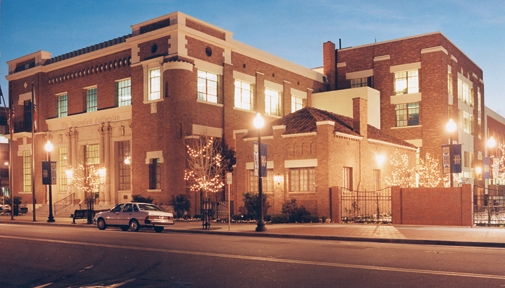Bakersfield and its Paper
 The trial blog was only the latest step in the evolution of an unusually tech-savvy newsroom. Although its size and location did not make it an obvious incubator for cutting-edge journalism, the
Californian
had been one of the early adopters of Web technology. Bakersfield, California, the seat of Kern County, lay some 100 miles north of Los Angeles in the San Joaquin Valley. Greater Bakersfield was home to some 480,000 people, about 40 percent of them Hispanic. Lush green irrigated fields were separated by dusty patches of land punctuated with oil derricks bobbing up and down like so many metal birds. Though the oil economy was fading by 2007, Bakersfield was still home to two of the country’s largest working oil fields.
The trial blog was only the latest step in the evolution of an unusually tech-savvy newsroom. Although its size and location did not make it an obvious incubator for cutting-edge journalism, the
Californian
had been one of the early adopters of Web technology. Bakersfield, California, the seat of Kern County, lay some 100 miles north of Los Angeles in the San Joaquin Valley. Greater Bakersfield was home to some 480,000 people, about 40 percent of them Hispanic. Lush green irrigated fields were separated by dusty patches of land punctuated with oil derricks bobbing up and down like so many metal birds. Though the oil economy was fading by 2007, Bakersfield was still home to two of the country’s largest working oil fields.
Thanks to its geography and weather patterns, in 2006 the American Lung Association ranked Bakersfield as the most ozone-polluted city in the country; it ranked the city second in short-term and year-round particle pollution. Its downtown was quiet, hazy in the almost constant sunshine, and decidedly small town.

While the Californian over the years had encountered sporadic competition from the Los Angeles Times , by the mid-1990s its editors began to see reporting on the Internet, as well as television news, as the real competition. In November 1993, CEO Michael Fisch hired as managing editor for nights (another managing editor covered days) 39-year-old Mike Jenner , a former reporter and editor at papers including the Hartford Courant and the Philadelphia Inquirer . In mid-1994, Moorhouse and Fisch hired Richard Beene as executive editor, and shortly after Jenner became sole managing editor. Jenner, Moorhouse, and Beene understood that “the Internet was going to be a real play and we needed to own it,” says Jenner. “We needed to be the local voice and needed to make sure that we staked out our territory early.” The paper went online on October 1, 1995. Its website was called Bakersfield.com. [1]
Footnotes
[1] The paper at first partnered with a local computer consultant to run the electronic bulletin board.